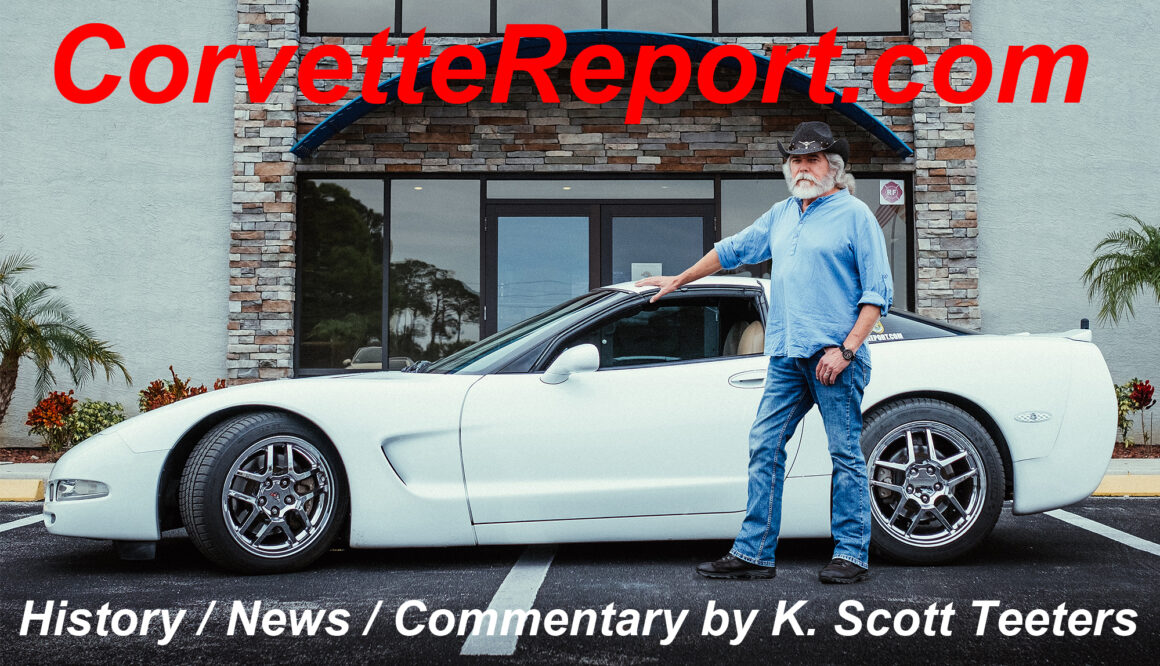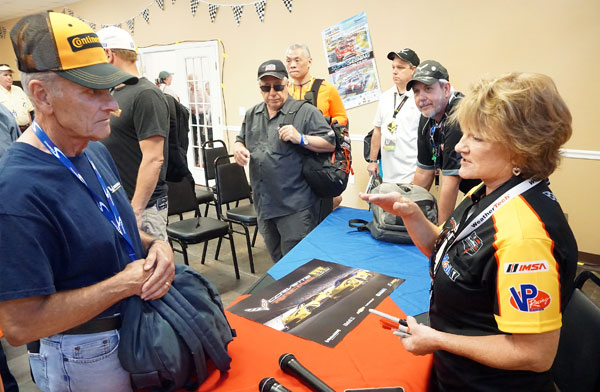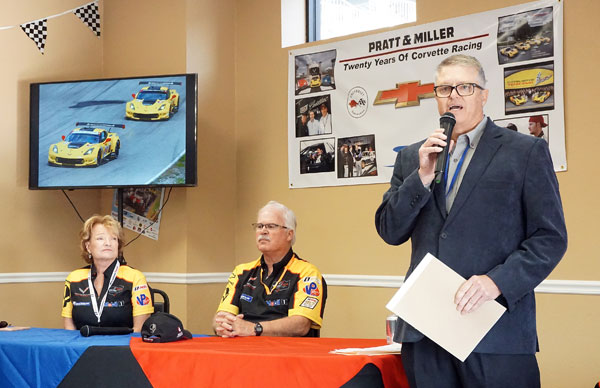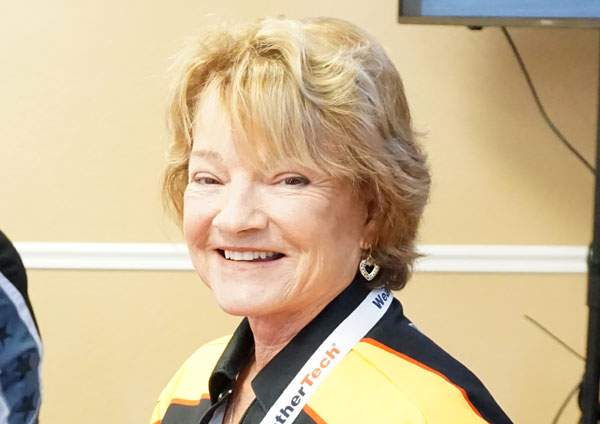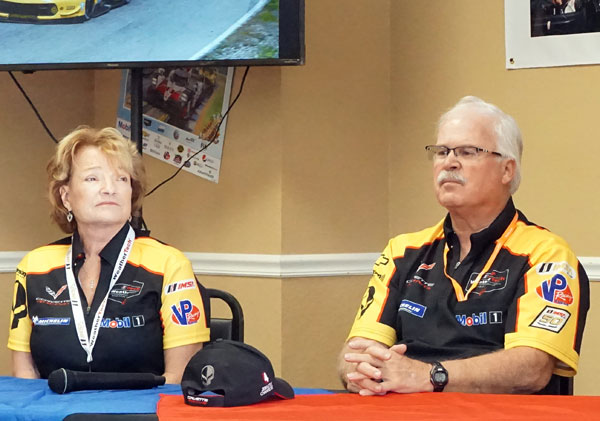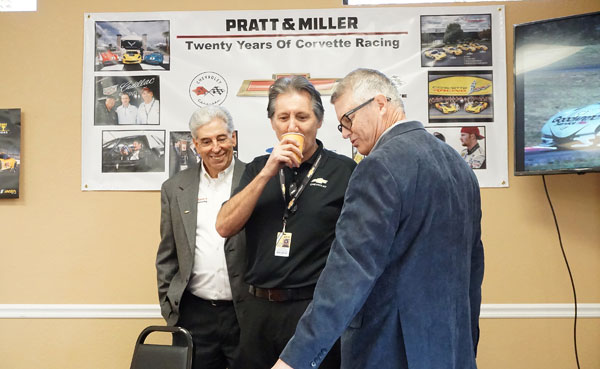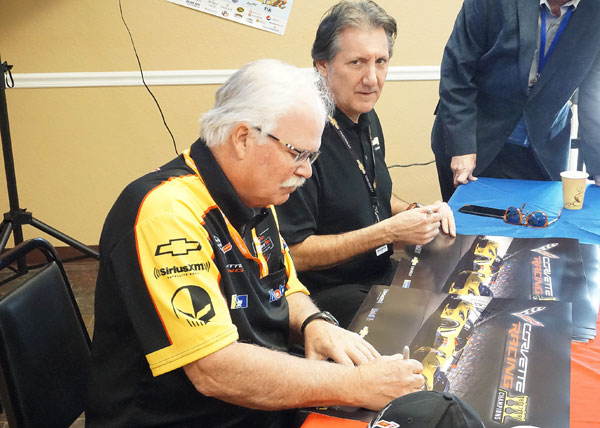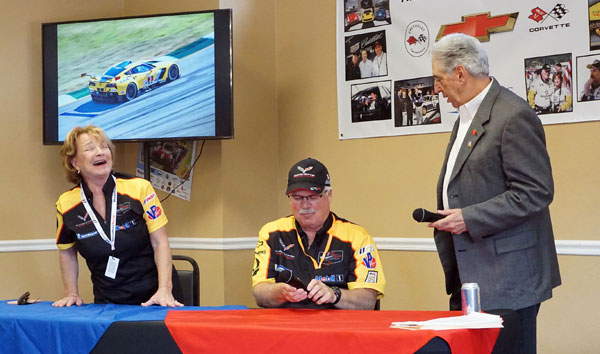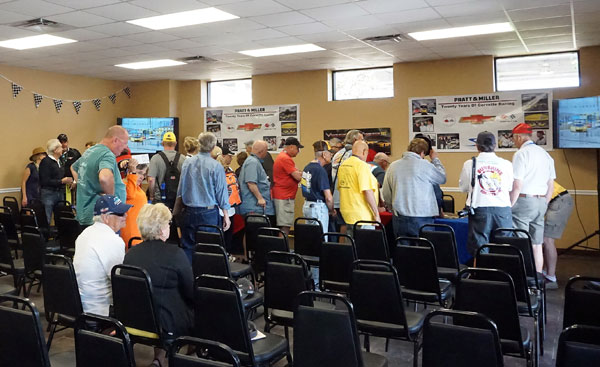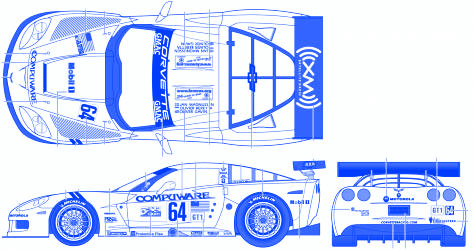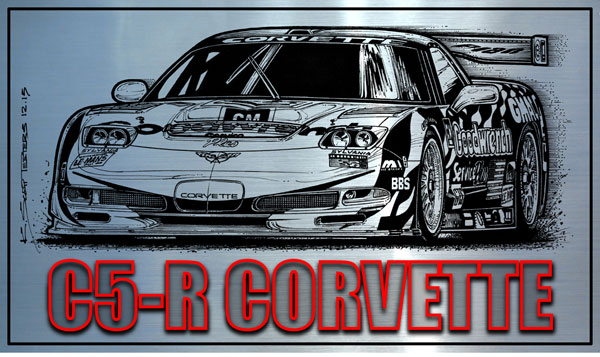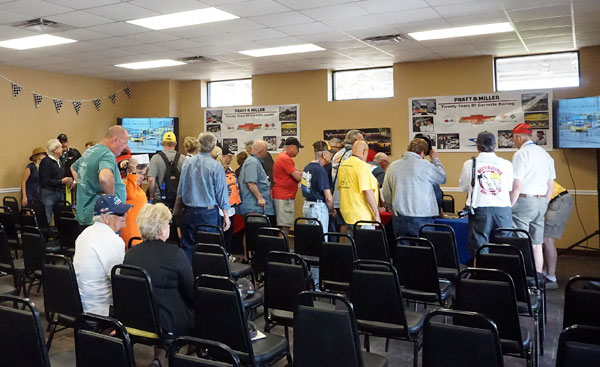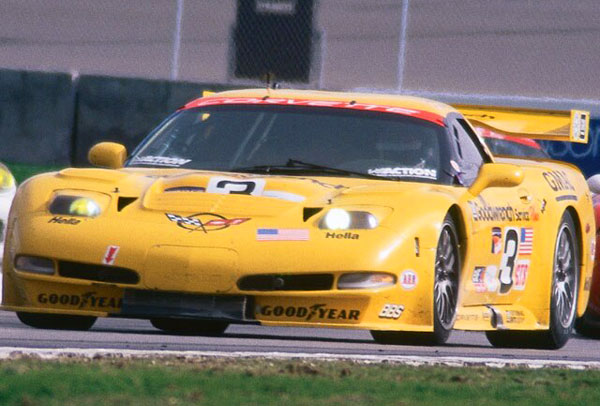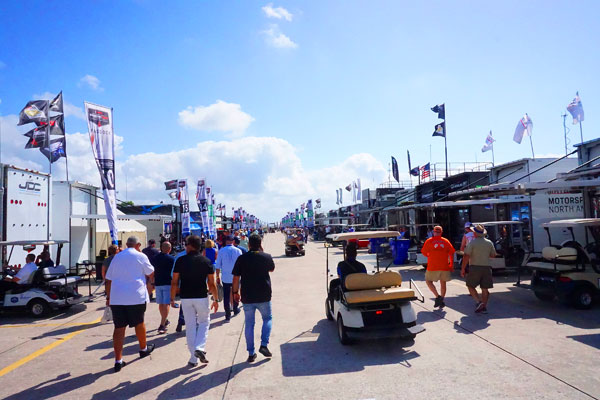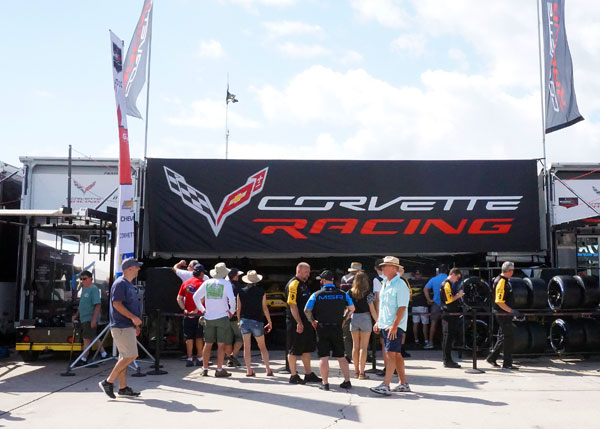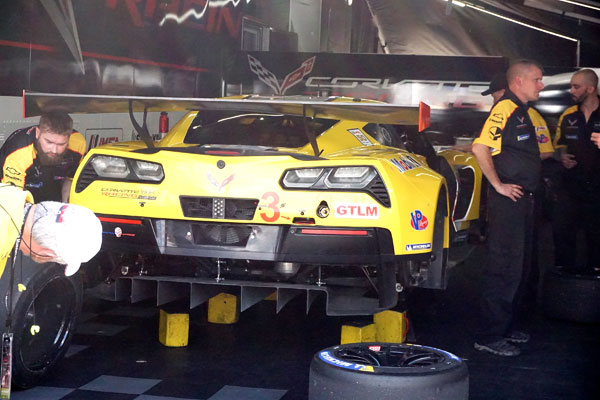With Special Guests, Gary and Robin Pratt (former co-owners of Pratt & Miller Engineering), and Ron Fellows, owner of the Ron Fellows Performance Driving School
Dateline 1-2-2021 – The story was first published in the July 2019 issue of Vette Vues Magazine – Since last month when Part 1 of this story was written, the big news in the Corvette world was the announcement that on July 18, 2019, Chevrolet will release the long-awaited 2020 mid-engine C8 Corvette. We already knew that 2019 would be the C7.R’s last season of racing and that in 2020 the Corvette Racing Team would be running the mid-engine C8.R. We can well imagine how excited the team drivers are about the prospect of finally getting to race a mid-engine Corvette.
As of this writing (March 2019), Jan Magnussen and Antonio Garcia in the No. 3 C7.R Corvette are in second place in the IMSA Weathertech GTLM points standings with 119 points, just six less than the No. 912 Porsche of Earl Bamber and Lauren Vanthoor. That’s very impressive considering that the mid-engine Ford GT cars are in 5th and 6th place so far. Yet many continue to say that the front-mid-engine C7 Corvette is outdated. Yet the Corvette’s alleged “outdated” layout won the IMSA GTLM championship the last three years in a row!
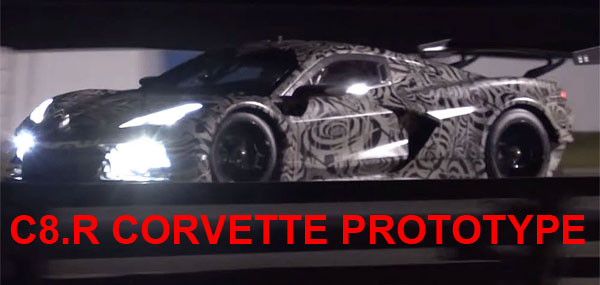
In the summer of 2018, a camouflaged C8.R was seen after the IMSA race at Wisconsin’s Road America. There was some speculation that this was an indication that the C8 would be debuted soon as a 2019 model and that we would see the C8.R for the 2019 racing season.
Tantalizing indeed, but it never happened. Instead, we are seeing the allegedly aging C7.R holding 2nd place, despite IMSA’s onerous Balance of Power (BoP) restrictions. Is IMSA trying to make sure the Corvette Racing Team doesn’t win another championship? Of course, they would deny that, but it sure looks that way.
This is what Gary and Robin Pratt, and the rest of the Corvette Racing Team are up against. Let’s continue our conversation from Bill Tower’s 2019 Corvette Racing Seminar at Sebring International Raceway on Friday, March 15, 2019. To read and enjoy Pt. 1 of this story, CLICK HERE.
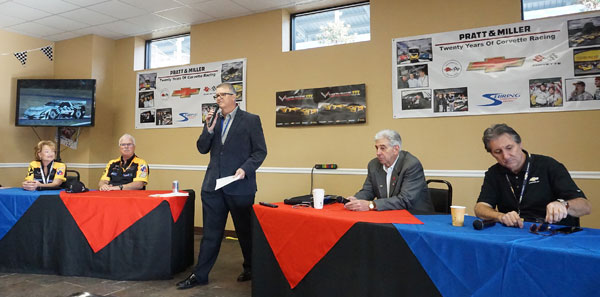
Bill Tower: Gary, what’s your favorite racecar?
Gary Pratt: My favorite car is the last one that won. (audience laughs) When we started the C7.R Corvette we were worried about the C7’s aluminum chassis. We also didn’t like the adjustable seats; they weren’t good for racing and we developed the crash-box. The transition from the C6.R to the C7.R was more engineering. We used a 50-percent model testing. Our test modeling can measure every part that hits the air. Our program is really staying on top. We have very, very good guys working together between the engineering teams and the track crews that are out there working the races.
Ron Fellows: Gary and Robin are true racers and sometimes they have to override the engineers.
Gary Pratt: Well, we don’t race dynos, wind tunnels, or simulators. But engineering certainly has its place. Chevrolet helped us a lot when we went to the air conditioning systems for the drivers. Their engineers developed the system.
Steve Hurley: Let’s talk about IMSA’s Balance of Performance (BoP) policy.
Ron Fellows: It was three years before we had our first win at Le Mans. Gary would argue with the officials and officials would tell Gary, “You have to work harder.” So, that became our motto, and that’s what we did.
Gary Pratt: At our first 24 Hours of Le Mans race in 2000, we came in 3rd and 4th. 2001 was our first Le Mans win, but the weather was a challenge, it was cloudy with a good chance of rain, which is always a challenge. Ron wanted to use the intermediate tires, but I wasn’t so sure. After a few laps, Ron was falling back. Then, it started raining and everyone was on slicks. Ron was making up 15 seconds per lap! So much of what happens is strategy, pit crew performance, and luck. Out pit crews are the best!
Robin Pratt: At Le Mans, the Steve McQueen movie was playing everywhere. Ron’s wife Linda played the McQueen’s part.
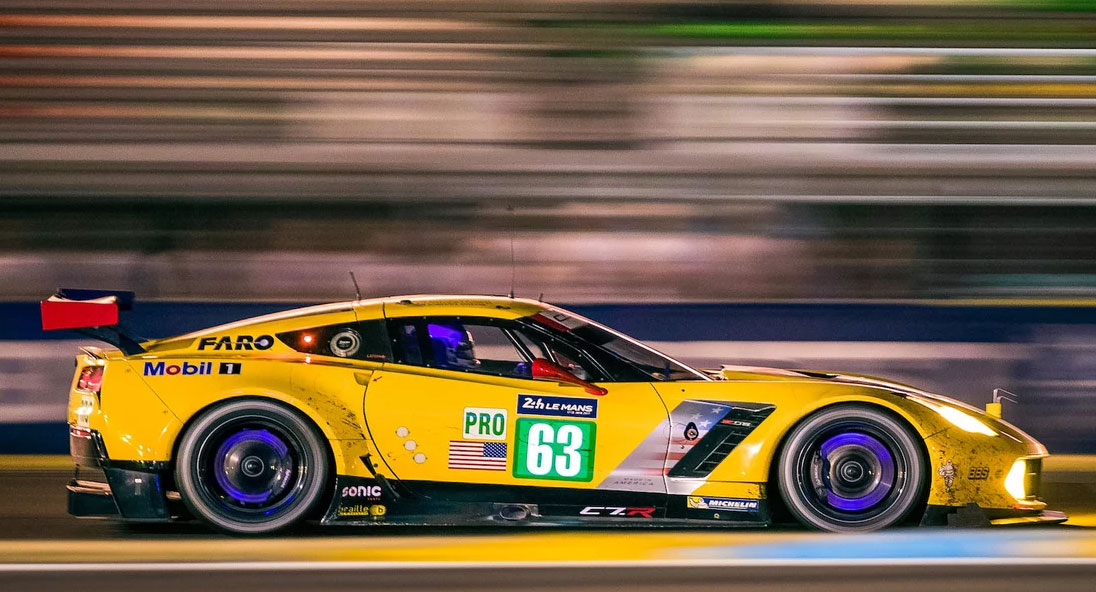
Ron Fellows: When I think of Corvette Racing, I think of Gary and Robin, and my wife Linda; and how they supported my total focus on driving. Linda learned to love racing because of the people. When we think of racing, we tend to think about the cars and drivers, but the people supporting the effort are just as important.
Steve Hurley: Gary, Robin, and Ron; we have some time left, how about some questions from our audience?
Gary, Robin & Robin: Sure!
Question 1: How was the transition from Goodyear tires to Michelin tires?
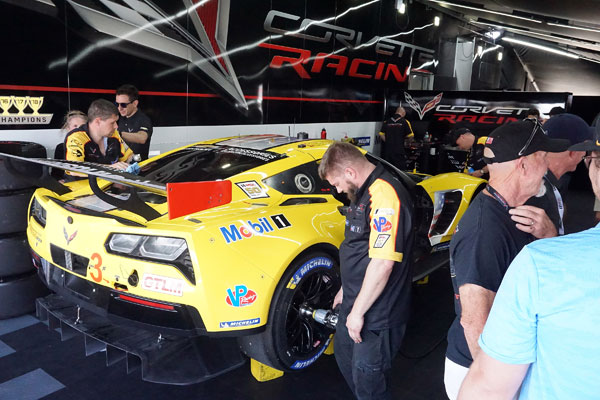
Gary Pratt: Switching to Michelin was a WOW! Michelin is a great company and they make great tires. Ron was racing Le Mans with 15 laps to go and the crew suggested putting “softs” on the car. Instantly, the car started picking up time. Michelin is a company that has it figured out. They do a lot of tire testing. Was it hard to switch? No; not at all.
Question 2: How will electric cars square with Corvette Racing?
Gary Pratt: We wonder that too. There will probably be some form of hybrid racing cars in the future, but I prefer gasoline.
Question 3: What about the mid-engine Corvette we’ve been hearing about for years now? (remember, this seminar was held in March 2019, months before Chevrolet announced the debut date of the mid-engine C8)
Gary Pratt: I’m not allowed to talk about that. But I’ll race whatever they have.
Question 4: Will the Corvette Racing Team look into racing in GT3, like the Callaway Corvettes?
Gary Pratt: That’s a tough question; we’ll see.
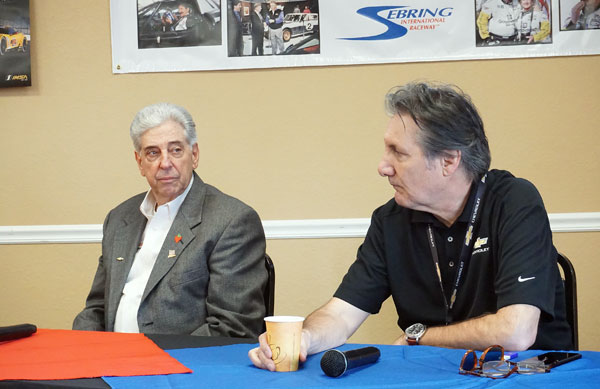
Question 5: I recently bought a C7 Z06 and went to the Ron Fellows Driving School, (looking at the audience) if you don’t go; it’s a big mistake!
Ron Fellows: That speaks to the quality of people that I have been able to transition from driver to teacher. Ten years in and it is awesome! Chevrolet subsidizes every Z06 owner. It is a great opportunity for owners to understand what the car is capable of. I’m 25 years into my relationship with Chevrolet and it has been great!
You know, it is amazing; the team recently put one of the cars back on the track in 20-minutes. We won the championship last year by one point! When Chevrolet comes out with a new performance version, we do a lot of work with them. It helps us too! We get more and more involved in the production Corvettes. It has been fantastic!
Steve Hurley: Is there an area where the Corvette Racing Team has impacted the production Corvette?
Gary Pratt: We helped the Corvette engineering team prove that the LS7 427 engine could be reliable. We also helped out a lot with the production of carbon fiber body panels. Yea, Corvette engineers talk to us a lot.
Bill Tower: We worked with Cadillac a lot with the carbon fiber body parts.
Ron Fellows: That’s true, Bill. We helped a lot with the evolution of the 6th generation Corvette. Former Corvette chief engineer Dave Hill asked Corvette Racing, “What do you guys need?” It turned out that the C5 Corvette body had more drag and the C6 shape was better on the long Mulsanne Straight. That really helped us deal with the V10 Vipers. When we went with the C6 Z06 configuration with the LS7 427, we picked up 50-lb/ft of torque! And we needed more torque to keep up with those V10 Vipers!
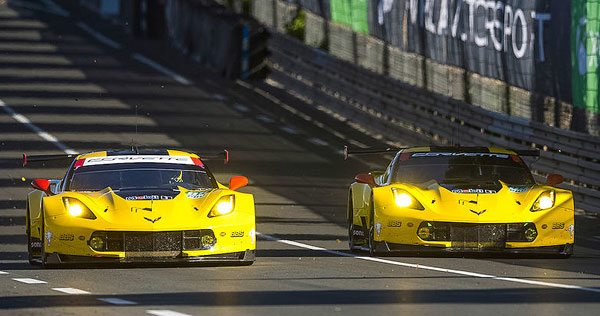
Question 6: Is there a limit on torque?
Gary Pratt: No, but BoP (Balance of Performance) limitations are tough!
Bill Tower: Folks, we are all out of time. Thank you all, very much for being here and we hope to see you again next year. Big thanks to our guests, Gary and Robin Pratt, and Ron Fellows. And to Steve Hurley MCing the event and Kyle Willoughby who put together the video images we have been showing. Thanks, everyone, see you next year!
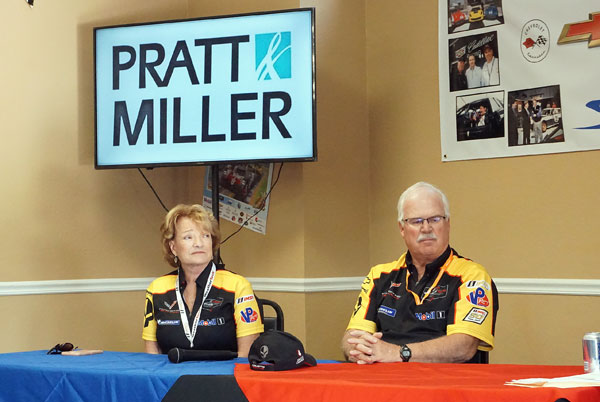
Epilog 1
2018 was the Corvette Racing Team’s 20th straight year in competition and the team has won the Championship an astonishing 13 times! BRAVO to everyone on the team; the drivers, the crew team, the engineers, fabricators, and Chevrolet for believing that “racing” is essential to the design and development of the Corvette. The Corvette Racing Team is the winningest team in IMSA history. Thanks to this enterprise, the Corvette has become General Motors halo car and represents their best example of engineering and design excellence.
In the early days, the European sports racing car companies treated Corvettes like a joke. Today they are not laughing, they’re trying to keep up!
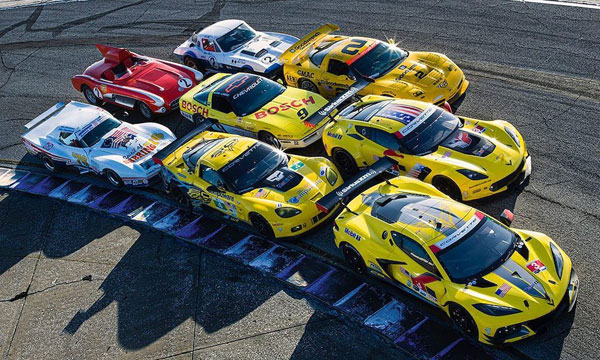
Epilog 2
Obviously, since this story was first published, much has happened. The Corvette Racing Team is looking very much like the Corvettes that dominated the mid-’80s SCCA Showroom Stock Series, only instead of the Corvettes being kicked out, most of the other teams have dropped out.
Why? Because racing at the level of complexity of IMSA-level teams because so expensive that several of the European teams decided the expense wasn’t worth it and the Corvettes were too hard to beat. So, they folded up their tent and went home. If you’re not winning or close to winning, work harder. That’s race’n! – Scott

To read and enjoy Pt. 1 of this story, CLICK HERE.
